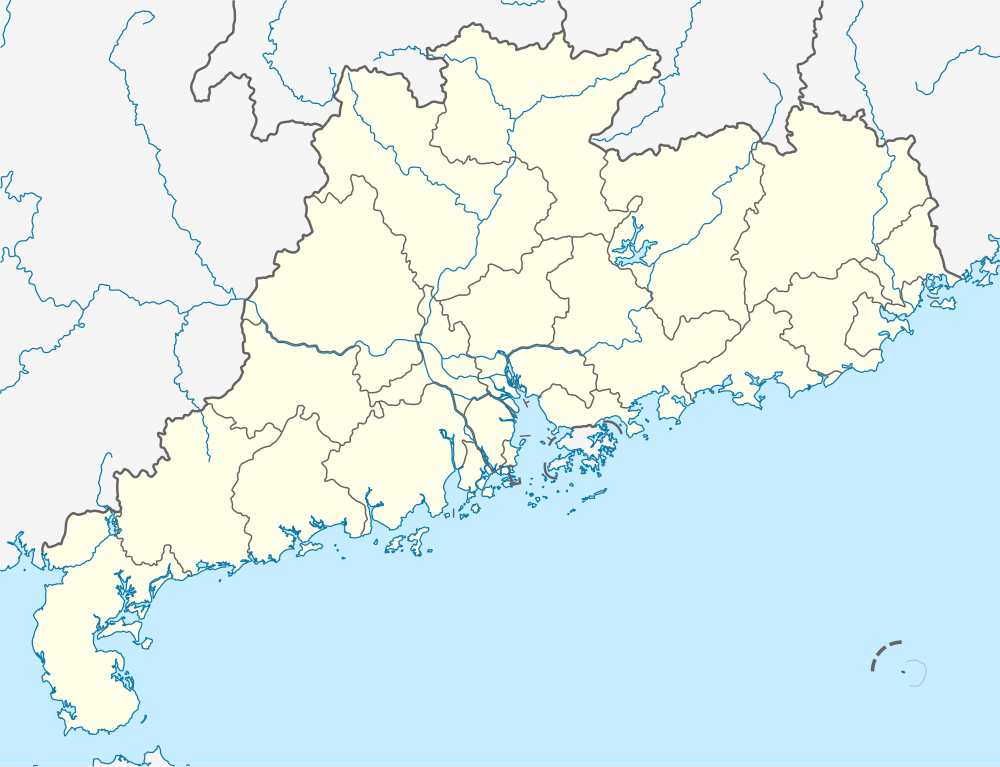Guiyu (town)
| Guiyu 贵屿 | |
|---|---|
| Town | |
 Guiyu | |
| Coordinates: 23°19′11.81″N 116°20′59.62″E / 23.3199472°N 116.3498944°ECoordinates: 23°19′11.81″N 116°20′59.62″E / 23.3199472°N 116.3498944°E | |
| Country |
|
| Province | Guangdong |
| Prefecture | Shantou |
| Time zone | China Standard Time (UTC+8) |
Guiyu (Chinese: 贵屿; pinyin: Gùiyǔ) is a town in the Chaoyang district of Guangdong province in China. Situated on the South China Sea coast, Guiyu is perhaps best known in the global environmentalist community for its reception of E-waste. In fact, the town also holds the record for being the largest e-waste site, as of 2013.[1]
Electronic waste
Guiyu, population 150,000, is a town in the Guangdong Province in southeast China.[2] It was once the largest E-waste site on earth,[3] and was first documented fully in December 2001 by the Basel Action Network in their report and documentary film entitled Exporting Harm.[4] The health and environmental issues exposed by this report and subsequent scientific studies[5] have greatly concerned international organizations such as the Basel Action Network and later Greenpeace and the United Nations Environment Programme and the Basel Convention. According to certain sources, Accrah, Ghana has succeeded Guiyu as the largest e-waste dumping site in the world.[6]
Guiyu has 5,500 businesses, many of them family workshops, that dismantle old electronics to extract lead, gold, copper and other valuable metals. This industry employs tens of thousands of people and dismantles 1.5 million pounds of discarded computers, cell phones and other electronics each year. Developed countries, including the United States, ship their discarded electronics to developing countries like this poor area of China because it is much cheaper than properly and safely recycling electronics. Regions like Guiyu now rely on electronics as an economic staple despite the adverse effects electronic waste has on health and the environment.[7] The burning off of plastics in the town has resulted in 80% of its children having dangerous levels of lead in their blood.[8]
A 2008 study titled Heavy Metals Concentrations of Surface Dust from E-Waste Recycling and Its Human Health Implications in Southeast China[2] examined environmental and human health risks in Guiyu by collecting dust samples from workshops, roads, a schoolyard and an outdoor food market that sells fish, vegetables and meat. The study found that in the workshops, there were elevated levels of Lead, Copper and Zinc. In the schoolyard, there were elevated levels for Lead and Copper. Other areas near the school also contained extremely high levels of Nickel, in areas where children often eat (and are therefore exposed to contaminated dust). In the food market, there were high levels of Copper, Nickel, Lead and Zinc, which is concerning because the food (often placed in plastic buckets on the ground) likely comes into contact with this contaminated dust. Lead and Copper in road dust were 330 and 106, and 371 and 155 times higher, respectively, than non e-waste sites located 8 and 30 km away. High metal levels at the schoolyard and food market showed that public places were adversely impacted. Out of all the metals found, there was the greatest amount of lead consistently present at all locations, and Copper was the second highest. Levels of lead for a workshop employee exceeded the “safe” amount of oral lead ingestion by 50 times. Lead levels for the general public were 5 times lower than those for e-waste workers, but was still higher than the "safe" amount. Children, who face great adverse effects from lead poisoning, face a potential health risk at all locations 8 times higher than adults.
Children under the age of 6 are especially vulnerable to lead poisoning, which can severely affect their mental and physical development or even be fatal. Lead can result in irreversible brain damage to their still developing brains. Some symptoms of lead poisoning in children include loss of appetite, weight loss, fatigue, stomach pain, vomiting, constipation and learning difficulties. Symptoms in adults include high blood pressure, decline in mental functioning, pain/numbness of extremities, muscle weakness, headache, stomach pain, memory loss, mood disorders and fertility problems including higher probability of miscarriages.[9] For both children and adults, lead poisoning can result in damage to the kidneys and nervous system.[10]
See also
- Agbogbloshie (electronic waste site in Ghana)
References
- ↑ Guinness World Records 2013, Page 037. ISBN 9781904994879
- ↑ 2.0 2.1 "Heavy Metals Concentrations of Surface Dust from e-Waste Recycling and it Human Health Implications in Southeast China" (PDF). Environmental Science Technology. 5 January 2008. Retrieved 27 November 2012.
- ↑ Johnson, Tim (April 9, 2006). "E-waste dump of the world". The Seattle Times. Retrieved 2007-03-09.
- ↑ "Exporting Harm: The High-Tech Trashing of Asia" (PDF). Basel Action Network. February 25, 2002.
- ↑ "Scientific Articles". Basel Action Network.
- ↑ http://www.theguardian.com/environment/gallery/2014/feb/27/agbogbloshie-worlds-largest-e-waste-dump-in-pictures
- ↑ Chung, Chien-min (7 January 2009). "China's Electronic Waste Village". Time. Retrieved November 26, 2012.
- ↑ Monbiot, George (September 21, 2009). "From toxic waste to toxic assets, the same people always get dumped on". The Guardian (London). Retrieved May 4, 2010.
- ↑ "Lead Poisoning: Symptoms". Mayo Clinic. 12 March 2011. Retrieved 27 November 2012.
- ↑ "Lead Poisoning: Complications". Mayo Clinic. 12 March 2011. Retrieved 27 November 2012.